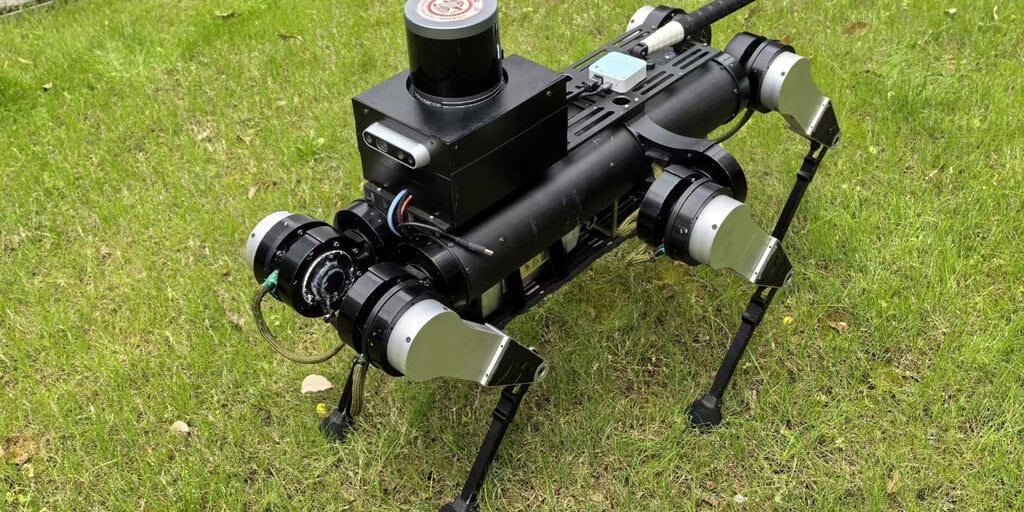A team of engineers at a university in China has developed an AI-enabled robotic dog for the blind that has high-end optics to detect changes in the environment and a speed-control cane mounted on its back—but that’s not all. The unit also has audio sensors that allow it to understand voice commands.
“The robot comprehends semantic information based on deep learning end-to-end speech recognition models, enabling rapid and accurate responses to voice commands such as ‘start,’ ‘stop,’ and ‘set a destination,’” noted a statement from the School of Mechanical Engineering at Shanghai Jiao Tong University.
Meanwhile, its visual system allows the robot dog to “autonomously navigate to its destination, dynamically avoid obstacles, and recognize traffic lights.”
Professor Feng Gao and the team designed the guide robot with six legs to ensure smooth motion and the greatest stability for it and its user. It was the first time the team integrated three interaction modes: auditory, tactile, and force feedback.
“The robot provides real-time feedback on walking and environmental conditions, achieving bidirectional intelligent interaction,” the school explained. “By applying force and torque through the guide cane, the robot guides users forward and assists with turning, while users can dynamically adjust walking speed by pushing or pulling the cane.”
Image: Shanghai Jiao Tong University
According to the school, the guide robot has a maximum pace of about nine feet per second and can connect to Wi-Fi networks so that it can provide additional services or contact first responders in case of an emergency.
The robots are being co-developed with Souchen Robot Co., which has not yet begun production of the guide bots, and no timetable was given on a potential launch. Still, the university said that “through mass production and AI-assisted development, the robot effectively reduces costs and addresses the shortage of guide dogs.”
The cost of the robot dog is tricky to pin down because of all its specialized components. However, the base models of commercially available robot dogs available in the U.S. start at $4,200 for the Unitree Go2 Pro—also developed in China—to more than $70,000 for Boston Dynamics’ Spot. Neither are engineered to assist the blind, however.
According to Guiding Eyes for the Blind, the actual cost to train and care for a real guide dog is approximately $50,000 a year.
Even if a fully equipped guide robot was priced at $100,000 at launch, that would still represent significant savings over the life of the asset compared to a real guide dog with an average service life of six to 10 years. The cost of the animal could range between $300,000 to $500,000 in total.
The university did not respond to a request for comment from Decrypt.
Ironically, the same country that developed this novel guide robot technology is the same one that decided to mount a machine gun on the back of a robot dog last month. A video published by CCTV, the Chinese government-funded news agency, demonstrated the killing power of the armed dog-bot during a military training drill between China and Cambodia.
Edited by Ryan Ozawa.
Generally Intelligent Newsletter
A weekly AI journey narrated by Gen, a generative AI model.
Source: https://decrypt.co/239169/new-robot-guide-dogs-for-the-blind-use-ai-to-obey-commands


